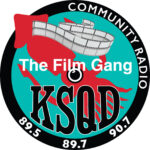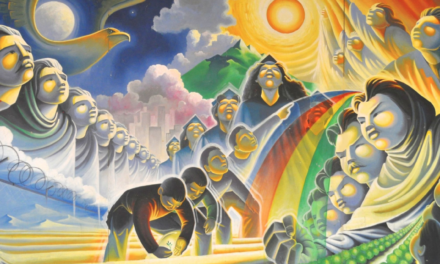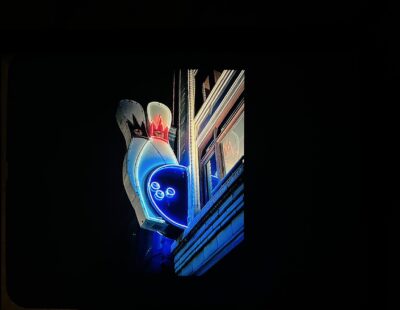
It doesn’t take very long to recognize a Wes Anderson film. His tenth feature, The French Dispatch, takes his go-to formula – wide-angle lenses, symmetrical compositions, deadpan humor, and whimsy that occasionally oversteps into the land of twee – and spikes it with steroids. Brimming with new and returning talent, including Adrien Brody, Benicio Del Toro, Tilda Swinton, Jeffrey Wright, Bob Balaban, Owen Wilson, Lois Smith, Timothée Chalamet, Christoph Waltz, Henry Winkler, Edward Norton, Liev Schreiber, Saoirse Ronan, Willem Dafoe, Elisabeth Moss, Frances McDormand and, of course, Bill Murray, it might take less time to name who in Hollywood wasn’t cast.
Reportedly, Wes Anderson is a huge fan of The New Yorker magazine. The French Dispatch is his homage to journalism and his first omnibus film, featuring four stories taken from the eponymous and fictitious publication that resembles The New Yorker in layout and artwork. The first and briefest story is a cycling tour of the town where The French Dispatch is headquartered, hilariously named Ennui-sur-Blasé, which roughly translates to “Boredom-upon-Apathy.” The second involves the discovery and exploitation of an incarcerated mentally disturbed painter who shares a tenuous relationship with his prison guard muse. A student protest that takes to the streets of Ennui comprises the third story, as well as the May-December romance that develops between the journalist covering the event and the young leader of the revolt. The final story chronicles the inadvertent involvement of The French Dispatch’s food journalist in a kidnapping plot.
In Fantastic Mr. Fox and Isle of Dogs, Wes Anderson used stop motion photography to make his plasticine characters come alive. Given his rigid filmmaking aesthetic, it’s no wonder Anderson was attracted to animation; it gave him complete control over every aspect of every frame. His live-action features are almost as impeccably engineered – and artificial. With The French Dispatch, Anderson adds a new flourish to his visual repertoire, essentially using his actors as if they were mannequins by staging what appears to be freeze-frames as the camera dollies past crowded scenes while every character stands frozen in mid-action. It’s yet another technique that reflects the dichotomy inherent in every Wes Anderson film post 1996’ Bottle Rocket; it looks amazing, but it’s unabashedly contrived. He also introduces massive foreground facades that are nonchalantly pushed aside by the cast to reveal a scene within a scene; just like his dollhouse set designs (put to even more use here), they create a sense of watching a play performed on the most elaborate stage imaginable. The net result makes The French Dispatch his most visually impressive live-action film to date, and also his most emotionally distancing.
The French Dispatch might also be Anderson’s most wordy film. The voice-over narration, combined with dialog delivered fast enough to do Howard Hawks proud, threaten sensory overload long before the credits roll. It’s pretty much impossible to fully appreciate both the witty patter and meticulously detailed set designs at the same time. On the other hand, its sheer density will no doubt reward subsequent viewings. At the end of the day, The French Dispatch is arguably Wes Anderson’s most ambitious film, definitely his most frenetic, and possibly the most alienating to all but the most devoted Wes Anderson fans.
For KSQD’s Film Gang, this is Paul Kanieski










